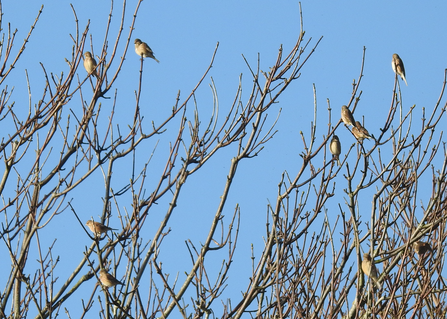In Cornwall, 70% of land is farmed, so working together with farmers to protect and enhance wildlife in Cornwall is vital. Cornwall Wildlife Trust has been working with the farming community for the past 10 years as part of South West Water’s Upstream Thinking project. Upstream Thinking is an award-winning partnership which uses a collaborative approach to improving wildlife, water and soil quality in local water catchments across the South West.
One example of the Upstream Thinking team playing an advisory role comes from West Penwith. In 2023, two families farming on the Bolitho Estate have committed to growing a special mix of cereals and flowering plants across 58 hectares of arable land to help boost our wild bird populations through the winter months.
Farmland birds are used as an indicator of the general quality of the farmed environment because birds sit near the top of the food chain and trends have been well monitored. The Breeding Farmland Bird Index shows numbers have declined by more than 50% since 1970 BTO website.



